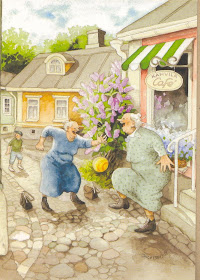
The White Pass and Yukon Route (WP&Y, WP&YR) (reporting mark WPY) is a Canadian and U.S. Class II narrow gauge railroad linking the port of Skagway, Alaska, with Whitehorse, the capital of Yukon. An isolated system, it has no direct connection to any other railroad. Equipment, freight and passengers are ferried by ship through the Port of Skagway, and via road through a few of the stops along its route. The railroad is a subsidiary of Clublink and operated by the Pacific and Arctic Railway and Navigation Company (in Alaska), the British Columbia Yukon Railway Company (in British Columbia) and the British Yukon Railway Company, originally known as the British Yukon Mining, Trading and Transportation Company (in Yukon), which use the trade name White Pass and Yukon Route.
Also operational, a few times a year, is an original steam-powered rotary snowplow, an essential device in the line's commercial service days. (The rotaries were retired in 1964, along with the remaining steam engines that pushed them, and snow clearing was done by caterpillar tractor.) While it is not needed as the tourist season is only in the summer months, it is a spectacle in operation, and the White Pass runs the steam plow for railfan groups once or twice a winter, pushed by two diesel locomotives (in 2000 only, it was pushed by two steam locomotives, #73 and #40). This card was sent to me by Eugenia.































